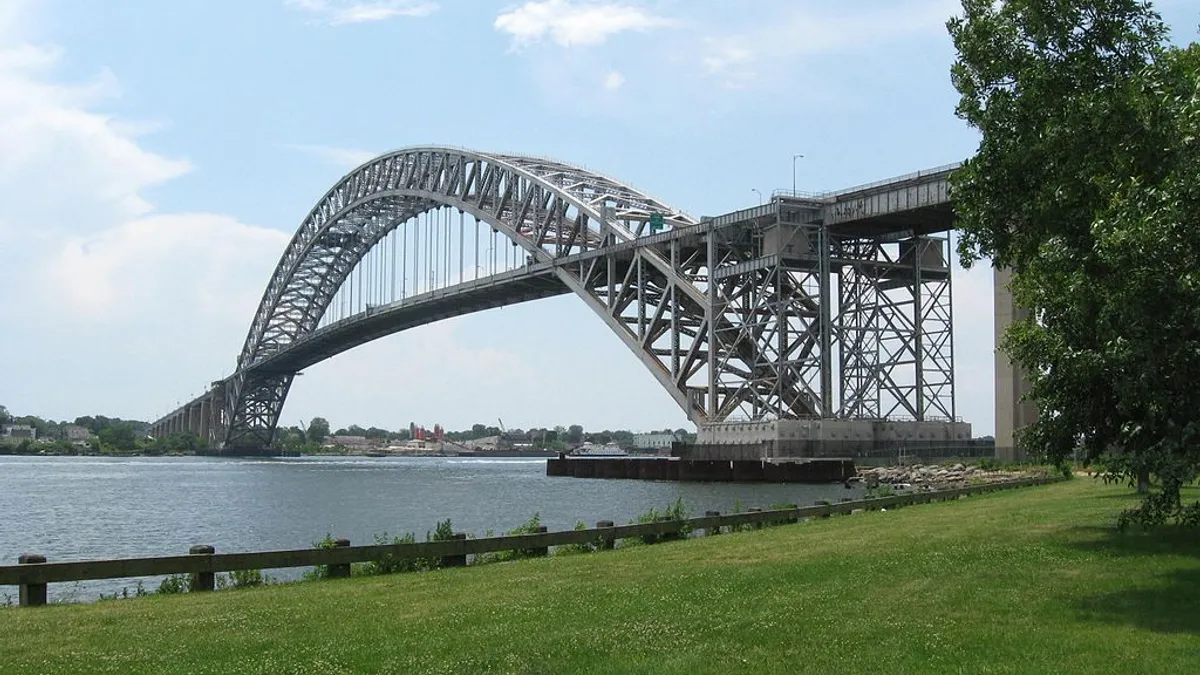Dive Brief:
- Newark Bay's Bayonne Bridge will be raised from 151 feet to 215 feet six months ahead of schedule, a counterpoint to the $2.1 billion dredging project at the Port of New York and New Jersey, The Wall Street Journal reported Tuesday.
- The raised bridge will allow the Port to begin accepting post-Panamax size vessels a full season earlier. Though initially slated for completion the summer of 2016, the project was pushed back to finish in late 2017, at a cost of $1.6 billion, or 20% higher than the original budget.
- The improvements are considered a game changer. While bigger ships won't necessarily mean more cargo, their ability to carry more per trip makes them more popular with shippers and could yield increased traffic to the East Coast port.
Dive Insight:
East Coast ports are positioning themselves well in the post-Panamax age. With the newest ships reaching 20,568 TEU, expansion is coming quickly. Maersk, for example, has at least 11 more vessels of that size on its fleet orderbook.
The effects of the Panama Canal expansion have long been foreseen, and ports have done their part to prepare for the new era. In the East Coast, dredging, bridge-raising, crane-buying and other such infrastructure projects are common. In the West Coast, ports are innovating to reduce congestion and collaborate better with stakeholders.
In fact, a seeming battle for market share among East and West Coast ports is brewing — and the East seems to be pulling ahead. London-based firm Drewry Shipping Consultants predicts containerized imports from Asia to the East Coast will likely move at a faster pace than those heading for the West in 2017. The reason? Price, as it becomes increasingly less expensive to transport east over west.
There's also the issue of 3PL distrust for West Coast ports due to memories of stevedore strikes. Slowdowns from 2015 thanks to labor disputes forced many shippers to rethink their strategy and build redundancies into their ports of preference, or shift from ocean transport to air and land carriers. Gulf and East Coast ports saw increased business as a result of that episode.
As more calls reach the East Coast ports, they may also do well to look west and learn from their past experiences with big ships and how to mitigate the challenges they bring to shore.













